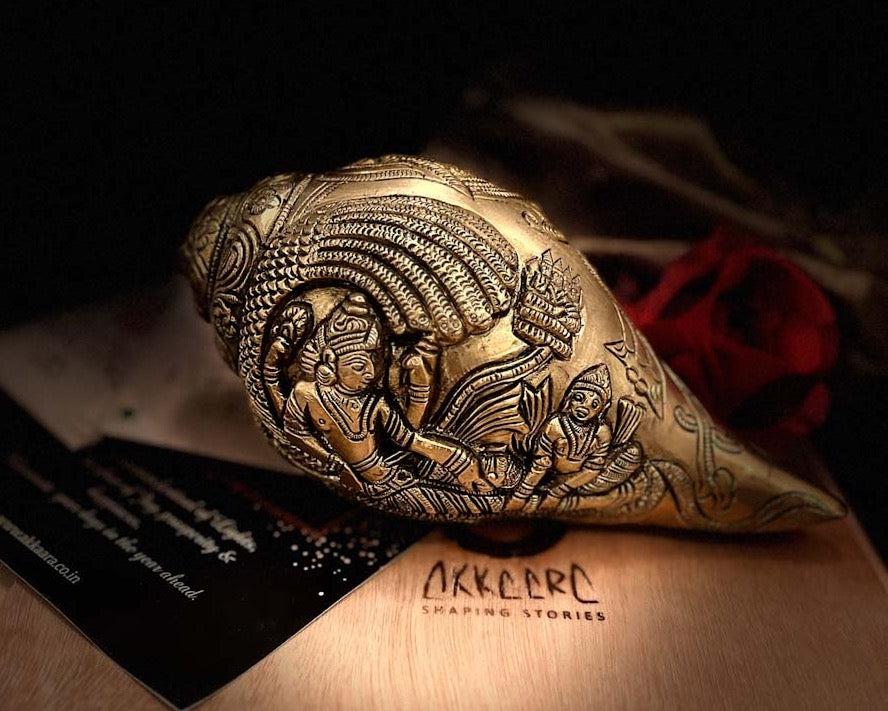Keywords: Shankh, Indian Culture, Hindu Rituals, Indian History, Conch Shell
In the tapestry of Indian culture, few symbols have as rich and varied a history as the shankh, or conch shell. Revered in Hinduism and intertwined with the country’s storied past, the shankh’s journey from the battlefields of ancient times to the serene temples of today is a fascinating tale of spiritual evolution and cultural significance.
Ancient Warfare and the Shankh
Our journey begins in the ancient battlefields, where the shankh first emerged as a symbol of martial prowess and victory. In the great Indian epic, the Mahabharata, heroes like Arjuna and Krishna famously blew their conch shells to signal the start and end of battles. This practice wasn’t just a call to arms; it symbolized righteousness and the fight against injustice, embedding the shankh deeply in the ethos of valor and morality.
The Shankh in Hindu Rituals
Transitioning from the battlefield to the realm of spirituality, the shankh took on a different but equally significant role. It became a staple in Hindu rituals, with its sound believed to banish evil spirits and purify the environment. The blowing of the shankh during poojas (worship ceremonies) is considered auspicious, creating a divine atmosphere conducive to spirituality. This transformation from a warrior’s tool to a sacred religious symbol illustrates the shankh’s versatility in Indian culture.
Symbolism in Indian Mythology
Indian mythology further elevates the shankh to a symbol of divine authority. Gods and goddesses are often depicted holding a shankh, representing their power to maintain order in the universe. The sound of the shankh is considered the primal sound of creation, akin to the sacred Om, making it an embodiment of the cosmic truths that underpin Hindu philosophy.
Archaeological Significance
Archaeologically, shankhs found in ancient sites across India indicate their long-standing presence in Indian traditions. They were used not just in warfare and rituals but also in trade and as decorative items, highlighting their multifaceted role in Indian history.
Modern-Day Relevance
Today, the shankh continues to be a revered object in Indian households and temples. It’s a bridge connecting the modern devotee to the ancient traditions of Hinduism, serving as a reminder of India’s rich cultural and spiritual heritage. In yoga and meditation, the sound of the shankh is used for its calming and concentrating effects, showcasing its continued relevance in contemporary spiritual practices.
From the battle cries of ancient warriors to the serene chants in temples, the shankh has journeyed through Indian history, embodying the nation’s evolving cultural and spiritual consciousness. Its enduring presence in Indian rituals and daily life is a testament to its unbroken legacy, making it not just an object of reverence but a living piece of India’s cultural fabric.

